Text

Scarab (mythology) 🪬🪬🪬
Scarab is a mythological animal in the form of a beetle, which in ancient Egyptian mythology was worshiped as a symbol of the sun, life and rebirth, and was also an image of the sun god Re or Khepri.
Amulets with the image of a scarab were placed, among other things, on mummified corpses, which the goddess Maat was supposed to weigh against the pen of truth (New State period)
The most commonly depicted was the sacred scarab (Scarabaeus sacer) of the scarab family, which is known for rolling balls of excrement on the ground, which it then buries in its hiding place. The female lays her eggs in said spheres, and the larvae (larvae) feed on the contents of the sphere after hatching, and after metamorphosis, the young beetles come out of hiding and thus become independent.
Due to the rolling of balls and ray-like tentacles, the sacred scarab became a symbol of the Sun, as the sun god Khepri is said to roll the Sun in the sky according to the same principle, or Re is said to ride in a boat from morning to evening across the sky, which is depicted on many ancient Egyptian artifacts.
An important religious representation for that time is the mysterious formation of bugs from dead matter in a ball of shit. In keeping with this earthly symbol of the celestial cycle, Khepri was also associated with rebirth, renewal and resurrection, and his name can actually be translated as "entering into the living". After the cult of the sun god Re had gained strength, Khepri was only referred to as the manifest form of Re in the sense of dawn, i.e. when the Sun passes into the dwellers. From a creative aspect, the scarab was also associated with Atum, the god of creation.
In the period from the Middle Kingdom onwards, scarab images were mainly present on stone seals and amulets, and they were also depicted on hieroglyphs in tombs. From the New State onward (that is, from the 18th Dynasty), amulets were often placed over the heart of a mummified corpse and, according to the Book of the Dead, had to be made of green stone. These special scarabs, which had the role of "heart amulets" or they were substitutes for the heart, they were very important, because according to belief, the heart was the seat of life force and the source of good and bad thoughts. They were intended for the final judgment after death, weighed against the pen of truth by the goddess Maat. Over time, the purpose of scarabs changed. Other nations and religions, especially in the area of the Levant, adopted scarabs for their own needs and deities, most often as symbols of good luck. They were used as posthumous gifts, talismans, and jewelry, among others.
🪷🪷🪷
8 notes
·
View notes
Text

Sacred lotus
plant
Also known as: Indian lotus, Nelumbo nucifera
Article History
Sacred lotus, (Nelumbo nucifera), also called Indian lotus, attractive edible aquatic plant of the lotus-lily family (Nelumbonaceae) found in tropical and subtropical Asia. Representing spiritual enlightenment, the flower is sacred in both Hinduism and Buddhism and was used in ancient Egypt to represent rebirth. The sacred lotus has a superficial resemblance but a distant relationship to the water lilies (family Nymphaeaceae).
By Encyclopaedia Britannica
🪷🪷🪷🪷🪷🪷
2 notes
·
View notes
Text
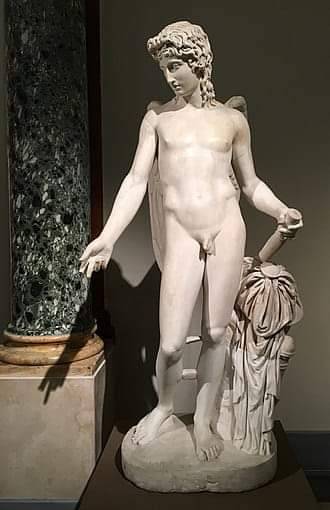
🎨 The Eros Farnese, a Pompeiian marble thought to be a copy of the colossal Eros of Thespiae by Praxiteles.
📜 Eros or Erotidia. The most solemn of all the festivals celebrated in the Boeotian town of Thespiae. It took place every fifth year, and in honour of Eros, the principal divinity of the Thespians. Respecting the particulars nothing is known, except that it was solemnized with contests in music and gymnastics ( Amat.1; Pausan. ix. 31. 3; Athen. xiii. p. 561). At this festival married couples made up any quarrels they might have. The worship of Eros seems to have been early established at Thespiae, where the ancient symbolic representation of the god--a rude stone--was long looked upon with reverence (Pausan. ix. 27. 1).
This text is from: Harry Thurston Peck, Harpers Dictionary of Classical Antiquities.
1 note
·
View note
Text
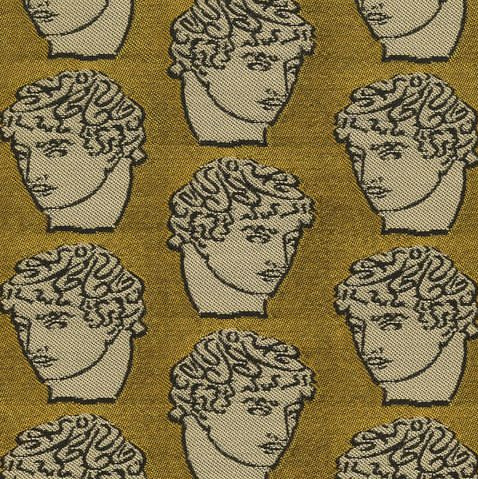
Return to Arcadia: Antinous in yellow, by @ lukeedwardhall 🪷🪷🪷
2 notes
·
View notes
Text


The cottage, its garden and Antinous, by @ lukeedwardhall 🪷🪷🪷
0 notes
Text
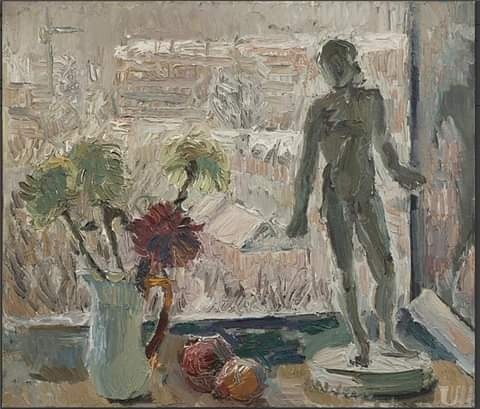
Still life with a sculpture of Antinous
Mykhailo Vainshtein, 1979
0 notes
Text

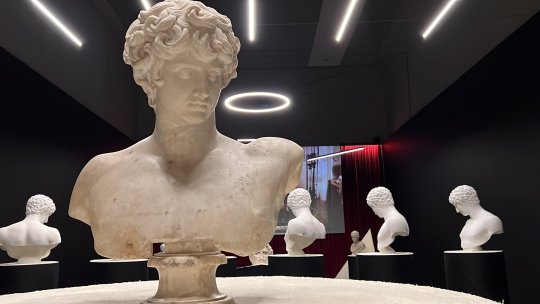

Animula Vagula Blandula
Francesco Vezzoli e l’antichità
@ Esposizioni
Vita Dulcis
Francesco Vezzoli e l’antichità
@ Esposizioni @ MNR_museo
Portrait of Antinous as a Rock Star
2023
Gesso, matita, tempera, acquerelli
Alomine Rech Gallery, Galleria Franco Noero, Apalazzogallery
2 notes
·
View notes
Text
Hoi, just sharing these here 😊
Made all of them some weeks ago

Asexual logo/pfp

Aromantic logo/pfp

And oriented aroace logo/pfp✨
Primarily did them cause I plan on getting them as buttons, noticed it would work well as a pfp too
Feel free to use them as long as I'm being credited 🤗
Edit: you're also allowed to print them, I don't mind it don't worry, as long as you don't pass it as your own
2K notes
·
View notes
Text
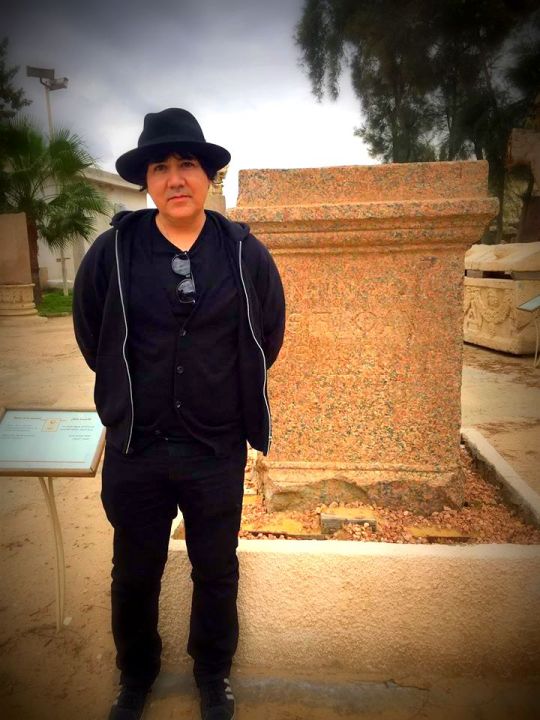


🪷 A colossal statue of Antinous stood on this plinth dedicated to Antinoos Epiphanios. Modern priest AntoniusSubia prayed before it in Alexandria Egypt. It was commissioned by Julius Fidus Aquila, first priest of Antinoo at Antinoopolis. 🪷
More images:
antinousstars.blogspot.com/2021/02/antoni…
2 notes
·
View notes
Text
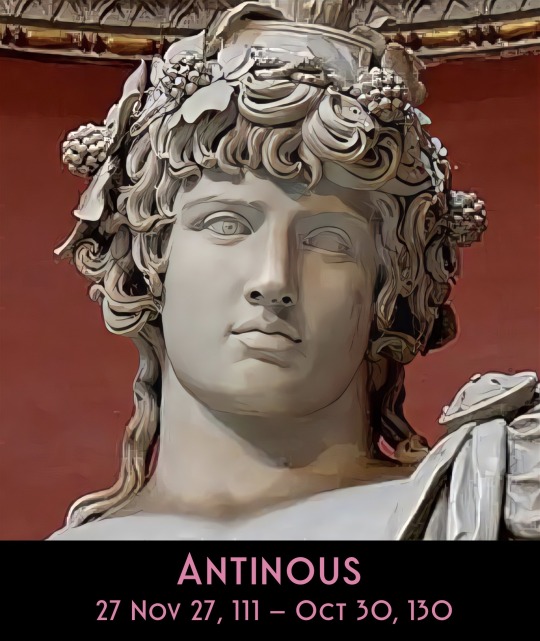
Antinous was a Greek youth who was introduced to Roman Emperor Hadrian in the year 123. He was taken to Rome to obtain an education and soon became the Emperor’s favorite. Antinous toured the Empire as part of Hadrian’s personal entourage.
Hadrian was admirer of Hellenic culture. He may have seen Antinous as an “ephebe” - the classical Greek ideal of a beardless, athletic adolescent. Their relationship was based on the Greek ideal of the love between an older man (the erastes), and a younger (the eromenos). In the Roman era this was not considered sinful. But the physical relationship was expected to end when eromenos reached maturity. Antinous was about to turn 20.

In October of 130, while Hadrian’s entourage was floating along the Nile, Antinous died mysteriously. None of the stories surrounding his death are conclusive… it was reported that he "fell into the Nile". But speculation runs far deeper. It might have been an accidental drowning, a suicide, or even a human sacrifice.
About 100 years afterward Cassius Dio, a Roman historian, wrote that he believed Antinous had volunteered to be sacrificed. A three year drought had hit the region of the Nile that they were traveling. This impacted not only Egypt but also Roman and Greek cities that depended on grain from the Nile. Hadrian, as emperor and a “living god”, would have been expected to do something about it.
Antinous would also have known that his time as the imperial favorite would be coming to and end. Would he have felt a lower position. unacceptable?
The date of Antinous coincides with a time period when the Egyptians commemorated the death of their god Osiris. It was tradition to sacrifice a beautiful youth to the Nile.
Whatever the cause of Antinous’ death, Hadrian was grief stricken. He “deified” Antinous - proclaimed him a god. Hadrian had a cult founded devoted to worshipping Antinous together with Osiris. The cult spread throughout the Empire. Nearly 100 altars were dedicated to him throughout Asia Minor.
Hadrian also founded the city of Antinoöpolis close to his eromenos’s place of death. In 1798 a French visitor counted over a thousand columns with a bust of Antinous on top.

114 notes
·
View notes
Text

🪷 Farnese Antinous likes "fags" (cigarettes). By Amir Cheniti, a North African Collage Artist with a background in architecture.
'Antinous the Gay God'page 🪷
6 notes
·
View notes
Text

🪷 Antinous doubtless celebrated the Floralia ... the six-day feast in late April and early May of Flora ... Roman goddess of flowers, actors, comedies and bawdy house workers. New comedy plays premiered in the theaters. Revelers wore flowers and brightly colored clothes and danced merrily in the streets. Adorn yourself and your home with flowers ... make libations of milk and honey to Flora and Antinous.
'Antinous the Gay God'page 🪷
More on this joyous and lusty festival here: https://antinousstars.blogspot.com/2023/04/we-joyously-celebrate-floralia.html
0 notes
Text
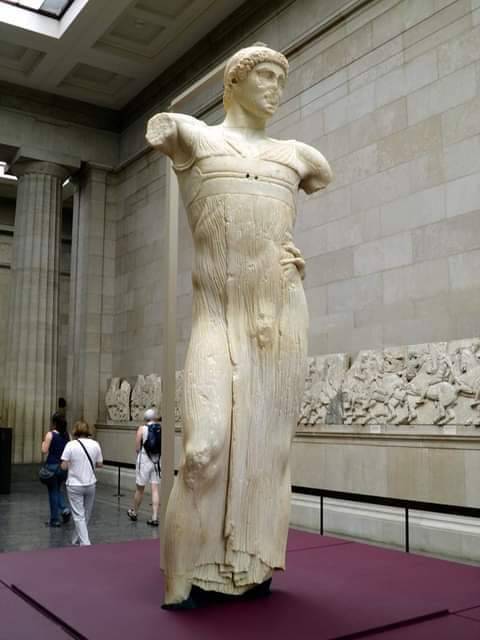
The Motya Charioteer, made by a Greek sculptor in Sicily, about 460-450 BC.
It was found in 1979 on the Sicilian island of Motya (Mozia), Winning at the ancient Games.
Located at the British Museum.
1 note
·
View note
Text

☥☥☥ «It Is not death that a Man shoul fear but he should fear never beginning to l i v e.«........Marcus Aurelius ☥☥☥
0 notes

